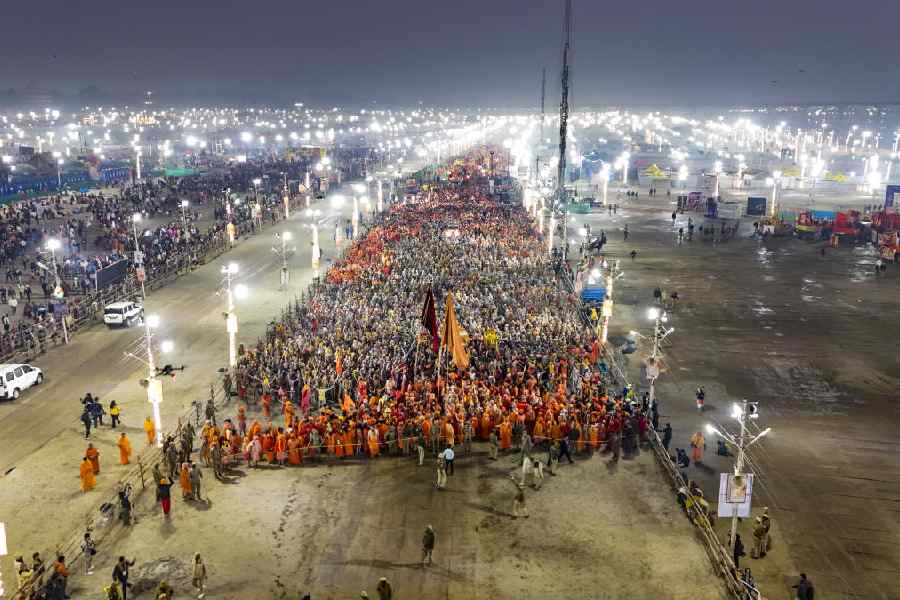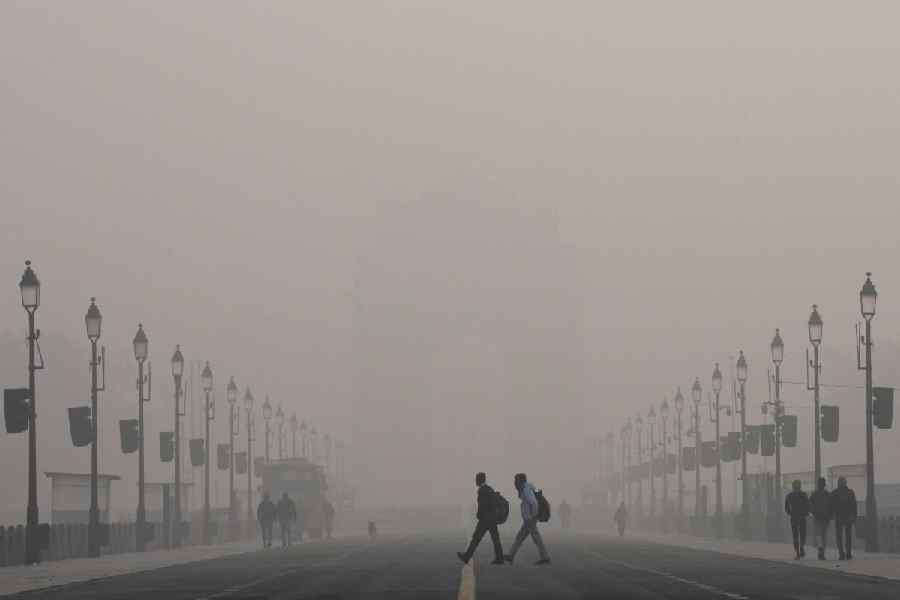The holy bath of Basant Panchami passed without incident on Monday, providing a sense of relief after the stampede tragedy of Mauni Amavasya on January 29.
Fewer pilgrims arrived for the holy dip on Monday and were more restrained, refraining from making a rush for the holiest site, the Triveni Sangam, which was closed to them like before.
The administration, on its part, allowed the crowd freer movement across most of the Mela area, avoiding the gridlock of roadblocks that had worsened the crush on Wednesday and set the stage for the stampede.
"Over 3 crore devotees had taken the holy bath by noon on January 29 but today the number is far lower. Many devotees decided not to come after hearing of the tragedy," an official deployed at the Mela said, asking not to be identified.
"Most of the pilgrims had rushed towards the Triveni Sangam on Mauni Amavasya but today, people seemed to have realised that trying to gather at one point could be dangerous."
The Mela administration said 1.25 crore sadhus and pilgrims had taken the holy dip along the 12km stretch of the Ganga and Yamuna riverbanks by noon.
"The ordinary devotees bathed away from the nose of the Sangam because the police didn’t let them go there," Parmeshwar Shukla, 55, from Hardoi in Uttar Pradesh, told reporters after taking the dip in Jhusi, about 2km from the Sangam.
"However, the sadhus from the akharas easily went there for the Shahi Snan. The foreign tourists were not stopped from going there, either."
Vaibhav Krishna, the deputy inspector-general of police in charge of the Mahakumbh, who was seen riding a horse in the festival area, said "everything is peaceful".
"We are staying alert to ensure there is no pressure point (a place where the crowd can gather in unexpected numbers). The last time (on January 29), there were many pressure points," he said.
Deploying horses or riding them in crowded places has since colonial times been a well-known police tactic to maintain order by intimidating people. Sources said the police had used this tactic first in Allahabad in the early 1990s during Mulayam Singh Yadav’s rule to suppress anti-reservation protests by students.
"There’s been no report of any unpleasant incident in the Mela area," Krishna said.
Chief minister Yogi Adityanath has admitted to only 30 deaths in the stampede but sources at the Mela claim there were several stampedes within a two-hour band and that the actual toll is much higher.
Pilgrims have blamed the stampede on the administration’s decision to close all 30 pontoon and steel bridges to ordinary devotees to try and create special passages for VIPs, including the mahamandaleshwars of several akharas.
Outlining the precautionary measures taken on Monday, a Mela official said: "We stopped all the four-wheelers outside Allahabad to ease the pressure on the city and the Mahakumbh. Even bikes are not allowed in the Mela area today. Those who have arrived at the railway stations have to walk to the Mahakumbh."
The distance from the Prayagraj (Allahabad) Junction railway station and the Kumbh is at least 30km.
Reports said hundreds of vehicles had been stopped outside Allahabad — in Jhusi, Naini and Phaphamau — leaving many devotees stranded.
The government claims that over 30 crore pilgrims have visited the Mela since the Kumbh began on January 14.
"The BJP government may claim that crores of devotees arrived in the Mahakumbh but they have failed to release the real figure of the deaths," Congress communications chief Jairam Ramesh said.
"It becomes clear that the government is the culprit and (is) trying to run away from its shortcomings."











